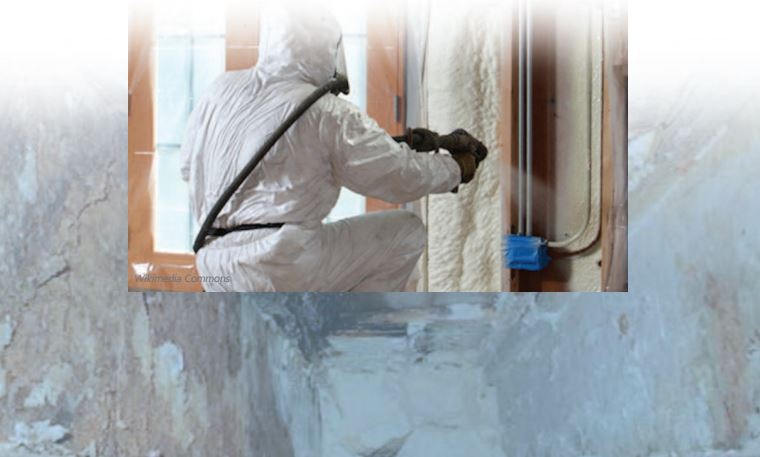Spray Foam: The Not So Perfect Insulation
Written By Stephen MacDougall, P.Eng.
In the quest for increased thermal performance of building envelopes as required by modern Building Codes, the use of spray foam insulation has become more popular in recent years, particularly in residential buildings.
Polyurethane spray foam insulation has been suggested by some in the construction industry as a silver bullet to provide a high insulation value per inch in addition to also forming a continuous air barrier and vapour retarder. The idea that the spray foam provides a built-in air and vapour ‘barrier’ has also led to the use of spray foam without a traditional polyethylene vapour retarder or a vented air space above when used in roofing or ceiling applications, typically accepted as being required with conventional fibreglass batt insulated assemblies.
The use of spray foam insulation without the requirement for a vented air space has made it particularly appealing for flat roof applications which conventionally require an vented air space above insulation placed between the roof framing (usually with limited functionality in flat roofs) or the placement of rigid insulation above the roof sheathing (typically used in large commercial buildings), both increasing the overall thickness of the roof assembly.
The use of spray foam insulation within flat roof assemblies without ventilation has one significant drawback however; moisture which enters the roof assembly is trapped between the insulation and roofing membrane, both of which act as vapour retarders. Further, unlike a conventional roof where significant moisture within the roof assembly would typically result in visible damage to the ceiling finishes, moisture entering and collecting within a…

